|
|
|
|
Multichannel adaptive deconvolution based on streaming prediction-error filter |
The second example is shown in
figure 7a. We use a 2D
benchmark wedge model to prove the necessity of the spatial constraint
for the streaming PEF deconvolution. The velocity of the wedge in the
model is 10 kft/s, and the velocity of the upper and lower media is 20
kft/s, therefore, the wave impedance corresponding to the top and
bottom interfaces of the wedge are reversed. The minimum-phase wavelet
with the dominant frequency of 30 Hz is selected to create the
synthetic data (figure 7b),
where the wavelet of the top and bottom interfaces appears
interference started from the 45th trace. The synthetic data are
firstly processed using the traditional predictive deconvolution
method (the filter length is 3) and the regularizednon-stationary
autoregressive (RNA) method (the filter length is 3) based on the
iterative algorithm (Liu and Fomel, 2011), and the deconvolution results are
shown in figures 7c and
7d, respectively. Due to
the model is stationary data, both methods can effectively improve the
resolution and distinguish the top and bottom interfaces of the wedge
model, but the traditional predictive deconvolution method is not
suitable for processing nonstationary data (see
figure 5) and iterative RNA
deconvolution produces high computational cost. Then we design a
streaming PEF with 3 (time) coefficients, the prediction step
![]() , and the time constraint factor
, and the time constraint factor
![]() for each
sample to further verify the effectiveness of the spatial constraint.
Figures 7e and
7f show the streaming PEF
deconvolution results without spatial constraint (
for each
sample to further verify the effectiveness of the spatial constraint.
Figures 7e and
7f show the streaming PEF
deconvolution results without spatial constraint (
![]() ) and
with spatial constraint (
) and
with spatial constraint (
![]() ), respectively. Both
single-channel and multichannel deconvolution improve the vertical
resolution, however, the result without spatial constraint appears
with unstable fluctuation and spatial discontinuity, especially at
rectangle location in
figure 7e. The spatial
constraint can effectively reduce the fluctuation and enhance the
structural continuity of deconvolution result. Meanwhile, the
computation time of the traditional method, iterative method,
single-channel, and multichannel streaming PEF deconvolution method is
0.011 s, 0.220 s, 0.011 s, and 0.012 s, respectively.
), respectively. Both
single-channel and multichannel deconvolution improve the vertical
resolution, however, the result without spatial constraint appears
with unstable fluctuation and spatial discontinuity, especially at
rectangle location in
figure 7e. The spatial
constraint can effectively reduce the fluctuation and enhance the
structural continuity of deconvolution result. Meanwhile, the
computation time of the traditional method, iterative method,
single-channel, and multichannel streaming PEF deconvolution method is
0.011 s, 0.220 s, 0.011 s, and 0.012 s, respectively.

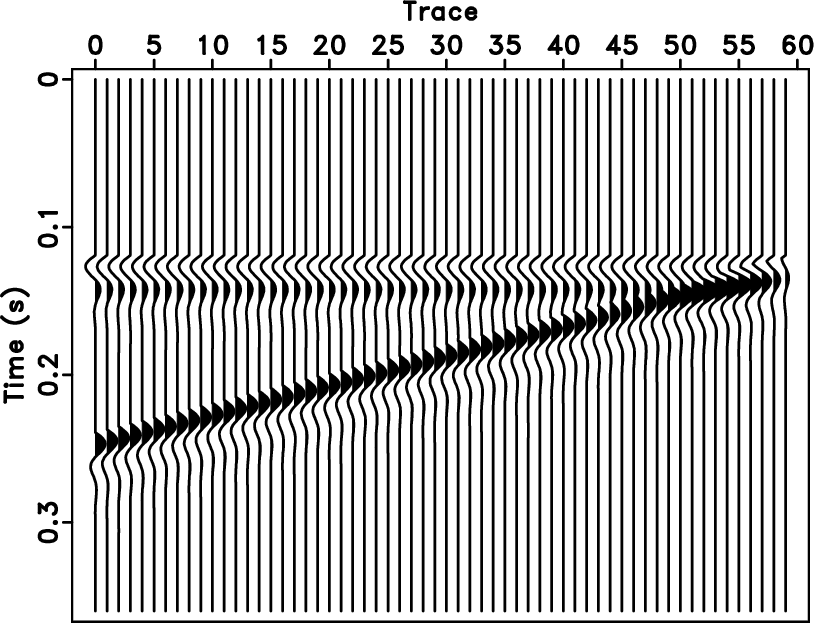
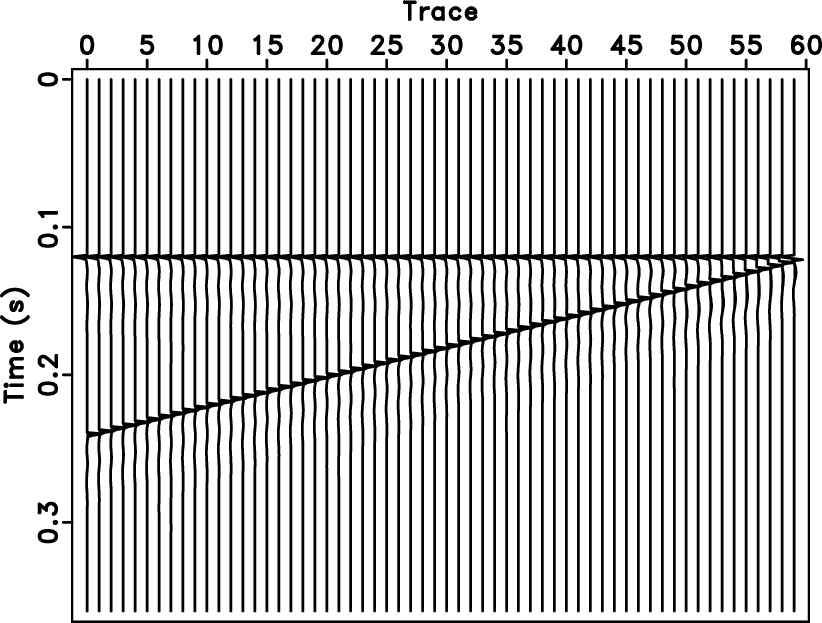
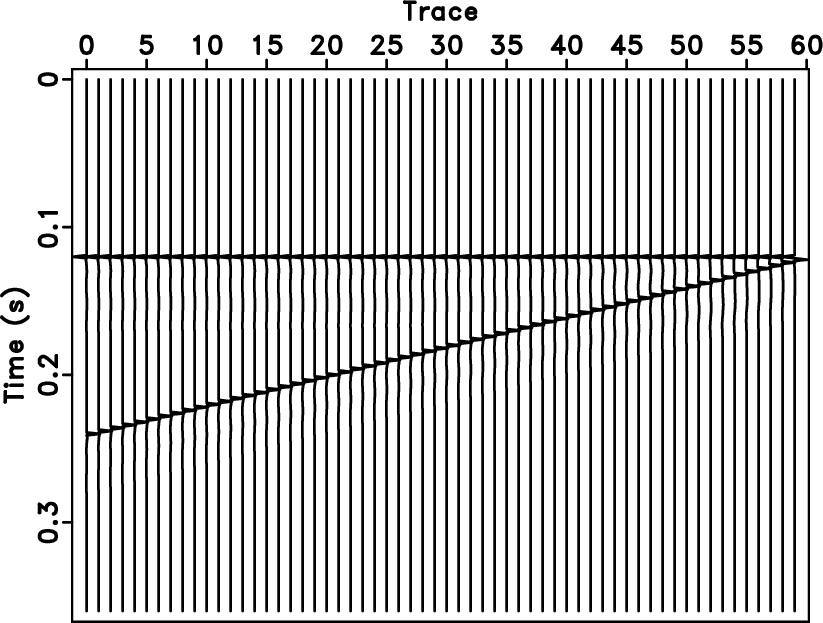
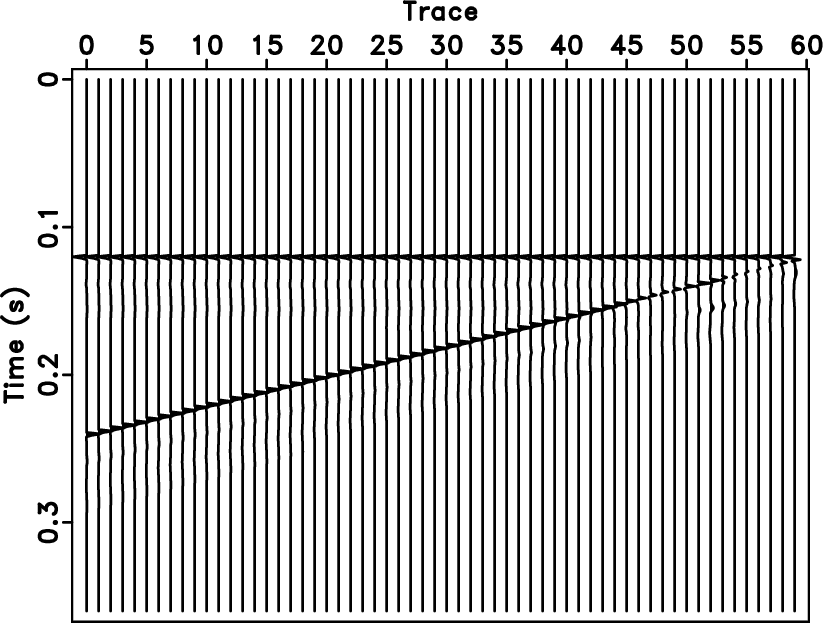
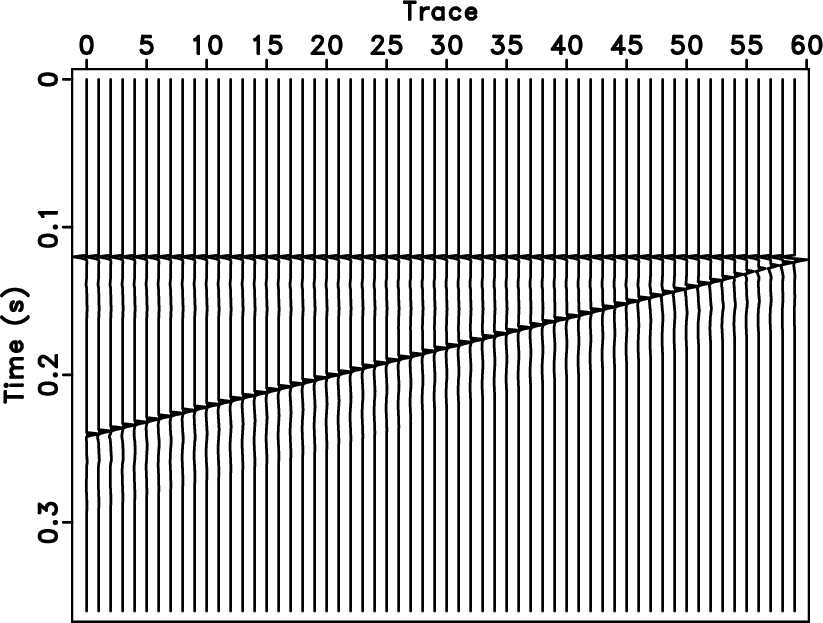
|
|---|
|
wedge,wseis2,tpef,apef,spef0,spef1
Figure 7. Wedge model. Wedge velocity model (a), synthetic data (b), the result of traditional predictive deconvolution (c), the result of iterative deconvolution (d), the result of adaptive single-channel deconvolution without spatial constraint (e), the result of adaptive multichannel deconvolution with patial constraint (f). |
|
|
|
|
|
|
Multichannel adaptive deconvolution based on streaming prediction-error filter |